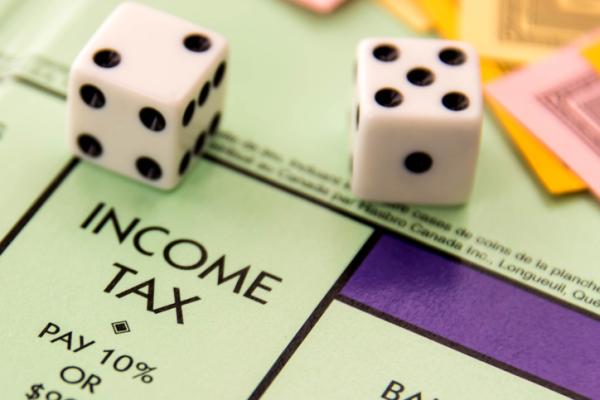Can you cut your income tax bill if you're a high earner?
According to the Office for National Statistics, in the 2021/22 tax year, just over 4.5 million people in the UK were paying higher or additional rate tax, a figure that has risen year on year and will likely continue in this fashion. This is mainly due to the 5-year freeze on allowances announced in the Budget 2021 and extended for a further two years until April 2028 following the updates in the 2022 Autumn Statement.
Added to this, the Chancellor announced in the Spring Budget of this year that the amount you can earn before paying additional rate tax would be lowered, from £150,000 to £125,140 from April 2023, meaning even more people are dragged into the highest income tax bracket. Furthermore, the annual Capital Gains Tax exemption has fallen from £12,300 to £6,000 per person, per year (falling to £3,000 from next tax year) and the tax-free Dividend allowance has fallen from £2,000 to £1,000 (and will fall to £500 next tax year). This creates a larger tax burden on all individuals and impacts the amount of tax planning each person should undertake.
Tax can have a big impact on your ability to preserve the value of your savings and investments in retirement. As such, one of the main focuses when advising clients, is creating a plan that helps them achieve their objectives in the most tax efficient manner. There are several ways to reduce the tax you pay on your annual income, especially if you’re in the higher or additional rate tax bracket.
Arrange your free initial consultation
What is higher rate tax?
In the UK, we do not get taxed on the first £12,570 we earn from our salary, bonuses, rental income, pensions, and other various income types - this is called our Personal Allowance. Income exceeding the Personal Allowance is then subject to income tax. This is banded so
- Your earnings between £12,570 and £50,270 are currently taxed at the basic rate of 20%.
- Earnings from £50,271 and £125,140 at the higher rate of 40%.
- Anything above £125,140 is taxed at an additional rate of 45%.
The personal allowance and the higher rate threshold (£50,270) have been frozen until 2028 following an announcement by the Chancellor in the Autumn Statement 2022.
As inflation continues to soar, exceeding the Bank of England’s 2% target rate, we expect to see the same trend for wages, increasing above the target rate as employees seek higher pay to combat inflation. Therefore, more people will join the 4.5 million previously pulled into paying 40%-45% tax on their earnings, so it is increasingly important we utilise the tax planning opportunities available to us, to minimise the impact of the frozen tax allowances and tax bands.
Ways to reduce your income tax bill
There are a few ways in which you can negate the impact that your income tax bill can have. Broadly, they are as follows:
Contribute to your pension
Contributions to a pension are made from taxed money. However, when you pay in, you will pay the “net” amount (80% for a basic rate taxpayer). The government will then make up the tax paid on the amount contributed, effectively making the contribution itself, tax-free.
For example, if you’re a basic rate taxpayer you can receive tax relief of 20% from the government, therefore it costs you 80p to make a £1 pension contribution.
Contribute to your pension via salary sacrifice
You can ask your employer to enter into a salary sacrifice contribution arrangement to your pension, which will reduce the amount of money subjected to the highest rate of income tax. This can become quite complicated and more details can be found on the government website.
A notable additional benefit of salary sacrifice arrangements is that depending on your employer, they may pay the National Insurance Contributions savings they make from the forgone salary in to your pension.
Make full use of your annual allowance
The great news is the Government have increased the amount that you can contribute into a pension each year, whilst still benefiting from tax relief. The maximum annual allowance has risen from £40,000 to £60,000.
If you are not subject to tapering of your annual allowance and you have not utilised your full allowance of £60,000, then you could consider making use of the full allowance from a personal contribution, or carrying-forward unused annual allowance from previous years. Please note, however, this can only be done up to a maximum of the three previous tax years.
Up to 60% tax relief available when you invest in a Pension
Investing in your pension pot is an attractive option to increase your savings in a tax efficient way. We actively encourage clients, when suitable, to contribute regular amounts to their pension to not only build up their pension pot but also to benefit from tax efficiencies.
For those earning between £100,000 and £125,140 you could be in the 60% tax trap. But this also presents an opportunity when it comes to saving for retirement. If you have taxable income in this range, you can effectively receive income tax relief of 60% on your pension contributions as this is the marginal rate of tax paid on earnings within this band. This is due to the impact of your personal tax allowance of £12,570 being reduced by £1 for every £2 you earn over £100,000 meaning the allowance is reduced to zero when your income reaches £125,140. A pension contribution within this band of earnings effectively reclaims part, or all, of your personal allowance thus increasing the rate of tax relief to 60%.
How to avoid the High Income Child Benefit Charge
An individual can receive Child Benefit if they are responsible for raising a child who is either under 16 or under 20 if they stay in approved education or training. There are two rates in which it is paid; for the first/eldest child, you will receive £24.00 per week and for any additional children, you will receive £15.90 per week per child.
If you are a couple claiming Child Benefit, where one or both individuals have an income above £50,000 per annum, or someone else claims Child Benefit for a child living with you and they contribute at least an equal amount towards the child’s upkeep, you may have to pay a tax charge. This is known as the ‘High Income Child Benefit Charge’.
The tax charge is calculated through the tax return on any partner whose income is more than £50,000 a year. In the event that both partners have incomes over £50,000, the charge will apply to the partner with the higher income. The tax charge will be one percent of the amount of Child Benefit received for every £100 of excess income.
One way you may avoid the tax charge is if a personal pension contribution is made, as the adjusted net income used by HMRC will reduce. If the contribution is enough to reduce this to below £50,000, the High Income Child Benefit tax charge will be avoided.
The benefits of charitable giving
Giving to charity is not only good for the cause receiving your donations but is also beneficial to your annual tax bill. If you keep a record of your donations, you will be entitled to report these on your tax return.
The most common way to donate to a UK registered charity or community amateur sport clubs (CASCs) is through Gift Aid. Gift Aid can only be claimed by UK taxpayers and is effectively the repayment of basic rate tax on the donation. This is not repaid to the donor but is given to the charity as they can claim an additional 25p for every £1 they receive.
If you are a higher (40%) or additional rate (45%) taxpayer, you are able to claim the difference between your tax rate and the basic rate of tax (20%) on your total charitable donation. An example of this is shown below:
If you make a charitable gift of £100, the charity will be able to receive £25 from HMRC to reclaim the basic rate tax. As a higher/additional rate taxpayer, you can then claim a further £25 (higher) or £31.25 (additional) relief back via your self-assessment for the £125 (gross) contribution you originally made.
To do this, you must register for gift aid with a ‘Gift Aid Declaration’, keep a record of your gifts and gift no more than four times your total income and capital gains tax payment for the tax year in question. More information can be found here.
And not forgetting, charitable giving is a great way to lower your loved one's inheritance tax bill.
Tax relief schemes and other allowances
An investment into a qualifying Venture Capital Trust (VCT), Enterprise Investment Scheme (EIS) or Seed Enterprise Investment Scheme (SEIS) attracts significant tax benefits. For an EIS or VCT, you can receive 30% income tax relief on the amount you invest, for SEIS this increases to 50% relief. This 30% is only achievable if you have paid sufficient tax for the year in question. For example, if you invested £200,000 into a VCT, you would receive £60,000 tax relief if you had an income tax bill of at least £60,000.
These investments were created by the government, as an initiative designed to help small and medium sized companies raise finance by offering tax benefits to investors. Given the type of companies they invest in, they are perceived to be high-risk investments.
They can be attractive to those who have maximised their other allowances for the tax year and are earning a significant salary which takes them into the higher and additional rate tax band.
But, as higher risk investments they are not suitable for all investors. There is a chance that all of your capital could be at risk and you should not invest into these types of plans without seeking expert advice from a reputable firm of independent advisers such as The Private Office.
|
Don’t invest unless you’re prepared to lose all the money you invest. This is a high-risk investment and you are unlikely to be protected if something goes wrong. |
|---|
How we can help
There are a number of actions that can be taken to reduce the amount of income tax you pay, which are especially beneficial if you fall into the higher or additional rate tax bands. These tax efficiencies are built into our financial plans, and we actively help clients maximise their allowances and income so they can achieve their goals throughout their lives. If you would like to find out more about how The Private Office can help you with personalised tax efficient financial plans, please enquire for a free initial consultation with one of our Independent Financial Advisers.
Arrange your free initial consultation
Please note: A pension is a long term investment, the value of investments can fall as well as rise. You may not get back what you invest. Your eventual income may depend on the size of the fund at retirement, future interest rates and tax legislation. The Financial Conduct Authority (FCA) does not regulate tax planning or advice.

